As another week of Bordeaux 2020 en primeur releases draws to a close, the campaign has begun to show signs of speeding up, with some compelling releases entering the market over the past three days.
Below we examine releases from Laroque (Wednesday 19th), Lafon-Rochet (Thursday 20th), and Branaire-Ducru and Batailley (Friday 21st).
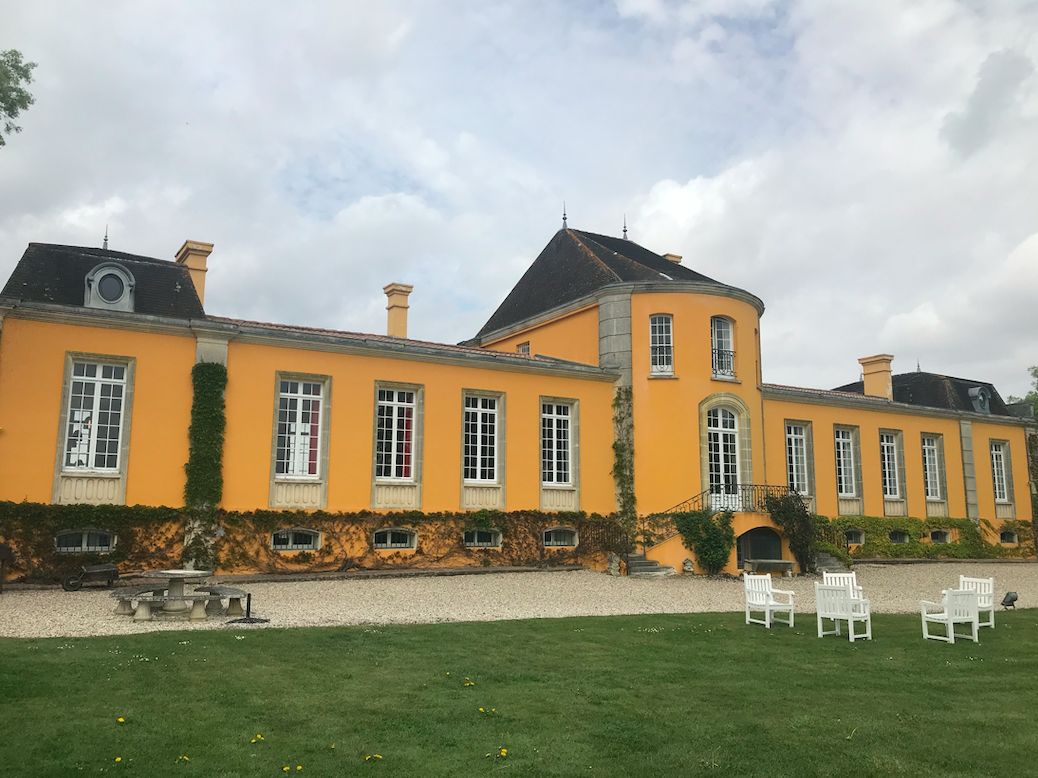 Lafon-Rochet’s latest release is a “very successful 2020”, according to Wine Lister partner critic, Jancis Robinson
Lafon-Rochet’s latest release is a “very successful 2020”, according to Wine Lister partner critic, Jancis Robinson
Released at £18.95 per bottle (in-bond), Laroque was described by Wine Lister CEO, Ella Lister as having an “ebullient, classy, very cassis nose”, developing into a “serious, structured wine on the palate”. The estate has seen recent improvements and investments to achieve a higher quality, starting with the hiring of David Suire in 2015, and the 2020 is no exception in the recent pattern of excellent value for money.
Lafon-Rochet’s latest vintage also illustrates the property’s upward quality trajectory. Having been awarded 17 points from Wine Lister partner critic, Jancis Robinson, (up from 16.5+ for the 2019) she describes it as a “very successful 2020” and congratulates owner, Basile Tesseron, for “producing something so appetising and groundbreaking”. Entering the market yesterday at c.£27.10 per bottle (in-bond), the vintage marks a year of development at Lafon-Rochet. As well as embarking on an agroforestry scheme in 2020 to enrich its environment, the latest release marks the inaugural collaboration of Jean-Claude Berrouet and Eric Boissenot, who worked together on its blending (recap our blog here). The price positioning of this top-quality vintage 10% below the 2019 market price has reportedly been very well-received.
Cru Classés Branaire-Ducru and Batailley were released this morning. Having made a name for itself as offering exceptionally good value within the Saint-Julien appellation, Branaire-Ducru’s latest release (at £31 per bottle in-bond) enters the market at an average 11% and 22% below than current availability of the 2019 and 2018 respectively.
Writing for JancisRobinson.com, James Lawther awards Batailley 2020 17 points, describing it as “Solid, subdued and distinctly Pauillac”. At c.£28 per bottle (in-bond), it enters the market under current average market prices of the last six vintages.
Keep track of en primeur releases on Wine Lister’s dedicated En Primeur Page here.
Speaking with some of the region’s top producers, Wine Lister CEO, Ella Lister provides her overview of Bordeaux’s 2020 vintage.
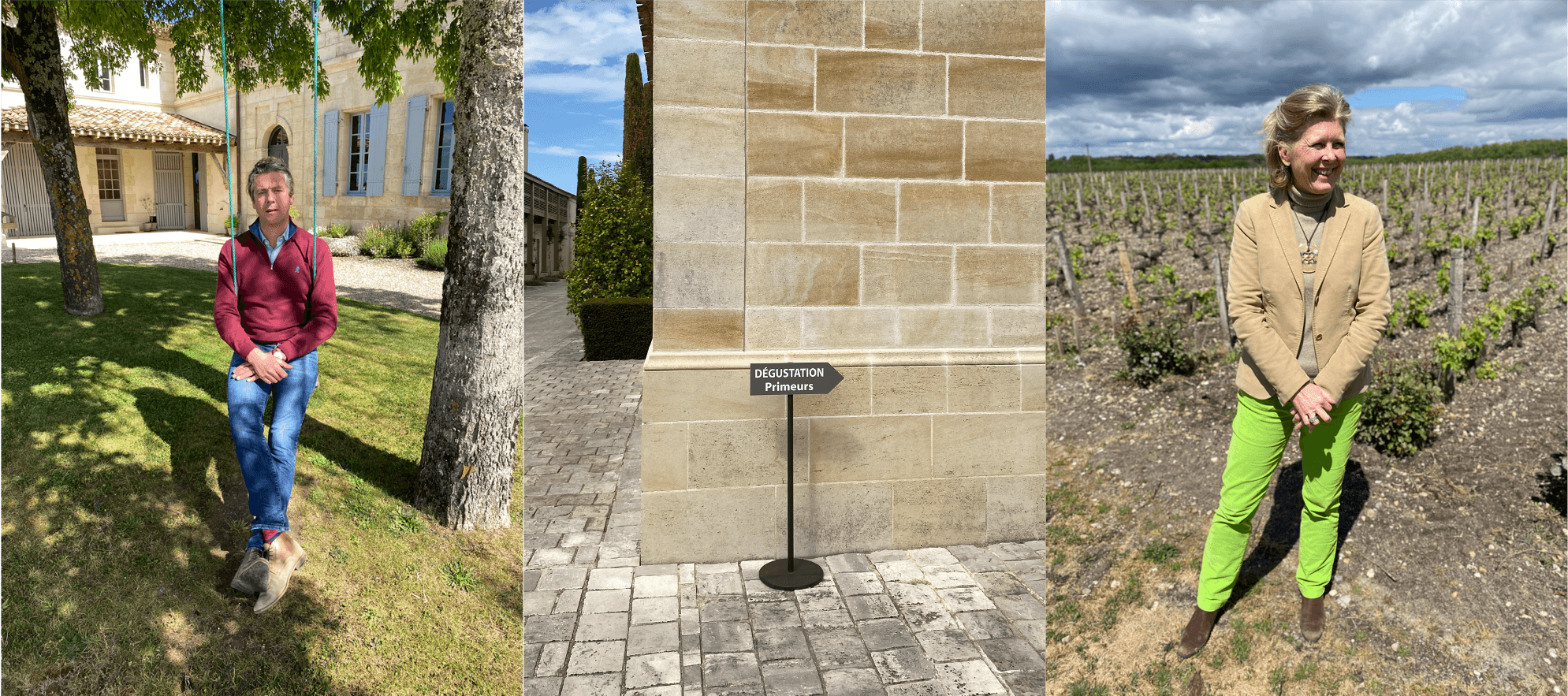 Left: Baptise Guinaudeau of Lafleur and Grand Village / Right: Véronique Sanders of Haut-Bailly and Le Pape
Left: Baptise Guinaudeau of Lafleur and Grand Village / Right: Véronique Sanders of Haut-Bailly and Le Pape
What should we expect from Bordeaux 2020?
2020 is an unprecedented vintage both in terms of the pandemic context and its juxtaposition of tannic power and exquisite freshness. On both banks of Bordeaux, the wines are characterised by an early growing season that underwent a series of extremes: a warmer winter than usual, a rainier spring, and a record dry summer, without so much as a drop of rain from mid-June to mid-August, then finally exceedingly hot during the harvest (one should spare a thought for the masked pickers). In spite of such difficulties, Veronique Sanders of Château Haut-Bailly notes that “the easy vintages in Bordeaux used to be the best ones, but in recent years that’s not the case”.
Henri Lurton, owner of Château Brane-Cantenac in Margaux, referred to 2020 as a “quite unique” vintage, both “hot and classic” at the same time. This observation is echoed by Baptiste Guinaudeau, co-owner of Château Lafleur in Pomerol, who recognises in 2016, 2018, and now 2020, a new type of growing season that didn’t exist before, uniting a big, sunny vintage like 2009 with a more classical vintage like 2008. 2020 is “multiple vintages in a single wine”, according to Lafleur’s cellar master, Omri Ram.
While several wines in 2020 in have record tannic density, you wouldn’t know it without the technical analyses. When you taste the wines, this power hidden by a delicate, diaphanous veil. Acidity remains decently high, and alcohol relatively low, allowing the wines to maintain the classicism that we recognise and love in Bordeaux.
In a year where the Bordelais couldn’t go on their usual marketing trips to the US, China and beyond, they were closer to the vines and to nature. This often meant whole teams dedicated to the vine-growing and winemaking instead of sales and marketing. This often meant whole teams dedicated to the vine-growing and winemaking instead of sales and marketing. “Un vin d’équipe”, says Marielle Cazaux, technical director of La Conseillante, referring to the unprecedented “team effort”, as the office staff worked in the vineyards, helping the vines through extreme rain, then drought, then heat.
Completing a trilogy of excellent vintages, after 2018 et 2019, 2020 is nonetheless more heterogeneous, where the top terroirs were best able to cope with the extreme climatic conditions. Each appellation boasts some exceptional wines, be it Pauillac, Pessac-Léognan or Pomerol. And these wines have a floral freshness, often of peonies or iris (the latter a scent deriving from merlot when it undergoes hydric stress).
Finally, the whites deserve a special mention in 2020. A vintage for lovers of richer, creamier whites, we found the best almost Burgundian, without the varietal grassiness of Sauvignon Blanc.
Following a successful campaign for Brunello 2015s in 2020, this year’s releases of Brunello 2016 will surely take one of Italy’s prominent winemaking appellations to new heights. Below we take a closer look at a handful of Brunello producers to look out for, as the region as a whole continues to rise in fine wine spheres.
Il Poggione
With a family history dating back to the 1800s (and beginning with Lavinio Franceschi), Il Poggione’s multi-generational winemaking experiences have given its wines quite the reputation. As the number one most popular Brunello (as measured by Wine Lister’s search rank, based on monthly searches conducted on the world’s most-visited wine website, Wine-Searcher), is it most certainly deserved – indeed, for the 2016 vintage, Il Poggione achieves a Wine Lister score of 97 – it’s best ever. Writing for Vinous, Eric Guido names it “a classic in the making”.
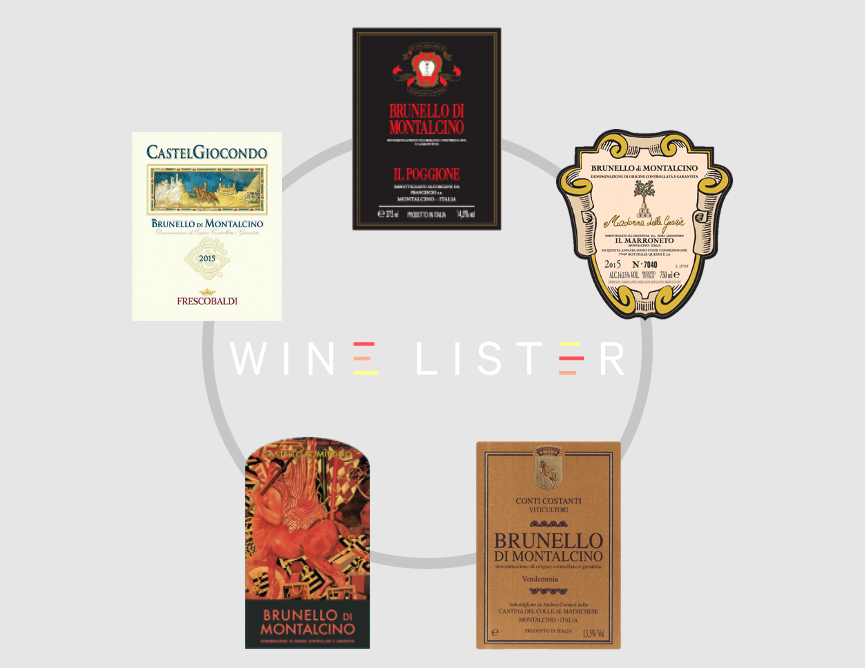
Il Marroneto
A comparatively young project, Il Marroneto was born from the purchase of vines by lawyer, Giuseppe Mori in 1974, and the ensuing passion for winemaking held by one of his sons, Alessandro. Strict commitment to quality has since seen the estate rise to become a quiet reference for the region, fetching high prices to match. Small availability from the latest vintage (2016) of the flagship wine, Madonna delle Grazie impressive is still available, at c.£263 per bottle in-bond).
Conti Costanti
Stemming from one of the most influential Sienese families of the 15th century, Costanti is another Brunello estate with wealthy history, and strong family traditions. As one of the first producers to present a wine under the name we know as “Brunello” today, its style has evolved beautifully under the watchful eye of winemaker, Andrea Costanti (indeed two recent vintages, the 2013 and 2010 achieve Wine Lister MUST BUY status). Awarding the 2015 vintage 17.5 points, Walter Speller writing for JancisRobinson.com notes, “True precision but definitely ‘sexy’ and sheer pleasure”.
Castello di Romitorio
Romitorio’s impressive castle possesses a rich history dating back to the Etruscans, while both its interior and the vines it overlooks benefit from the modern influence of its current ownership. Purchased by artist, Sandro Chia in 1984, his son, Filippo now runs the estate and makes its wine. Having attended a virtual tasting with him recently, organised by Honest Grapes, the wines appear to reflect their estate’s history in their timelessness, balancing a traditional style with contemporary energy and elegance. Some availability of the 2016 Brunello di Montalcino and single-vineyard offering, Filo di Seta, remains.
Castelgiocondo
A few kilometres southwest, lies “the castle of Giocondo” – another imposing Tuscan structure, originally constructed in the 12th century (AD) to guard the road leading from Siena to the sea, and owned since by one of the most famous families in Tuscany – the Frescobaldis. Joining Il Poggione’s Franceschi family in being one of the very first to produce Brunello in the 1800s, Castelgiocondo’s straight Brunello offering is also among the top-ranking wines of its kind in popularity. Those wishing to snap up the latest vintage offering may need to give it some time – writing for Vinous, Antonio Galloni notes the 2016 “needs some time to come together […] yet it has all the balance necessary to mature into a real beauty”.
Explore more top-scoring Brunello here.
On 11th February, Sassicaia 2018 was released at £150 per bottle (in-bond), 6% up on the release price of the 2017.
Wine Lister attended an online tasting of this new release, as well as Guidalberto and Le Difese 2019, hosted by Armit Wines and Sassicaia’s third-generation director, Priscilla Incisa della Rocchetta. Armit’s Managing Director, Brett Fleming noted the uptake on all three wines has been excellent: “it has been an extremely successful launch from Tenuta San Guido over the past two weeks. Update and demand have been far in excess of anything we’ve been able to manage”.
Though all three wines are made in the large majority from international grape varieties, Priscilla’s observation that “Cabernet [has] found its sense of place in Bolgheri” shines through the wines. Each has its own distinct character, but with a fundamentally Tuscan undertone.
Background
Sassicaia began as the passion project of Marchese Mario Incisa della Rocchetta. While studying agriculture at the university of Pisa, he developed a penchant for wine from Cabernet vines, and subsequently invested in his own, so as to have wine for his family and friends that appealed to his tastes.
During the Zoom tasting, Priscilla told us that in the 1960s, Marchese Mario’s third son, (and Priscilla’s father) Marchese Nicoló, managed to convince him to begin distributing the wine, “transforming his hobby into something resembling a business”. Over the last half-century, the agricultural focus of Sassicaia’s 2,500-hectare estate has shifted increasingly towards top-quality winemaking. Still continued today nonetheless is the breeding of race-horses on the estate, as well as the preservation of a 500-hectare wildlife reserve.
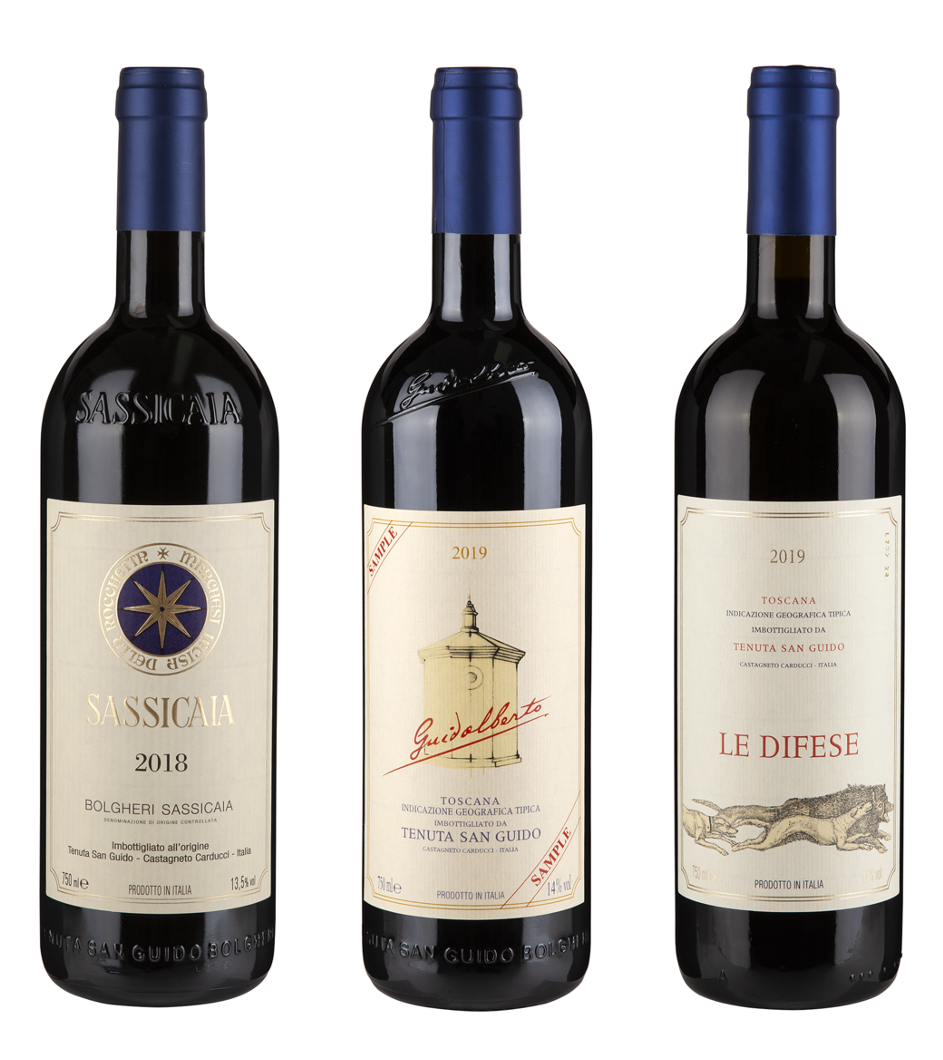 Official photos courtesy of Tenuta San Guido
Official photos courtesy of Tenuta San Guido
Sassicaia 2018
This is the 50th vintage of Sassicaia to be released onto the global wine market. Priscilla notes that “8” is usually a lucky number, and this was the case once again for the growing season resulting in this year’s anniversary release.
The wine leaps from the glass, with an energetic nose featuring suave red fruit, and a floral note of cherry blossom. The palate shows great depth – red cherries and plums as well as an earthier undertone, matched with a fine, elegant texture, particularly lifted by the wine’s vibrant acidity.
Guidalberto 2019
The only wine of the three tasted from a cask sample, the latest release from Guidalberto shows a sultry wine with impressive structure, yet seamless integration of its elements. The fruit profile is darker than its big cousin, but the same lift and freshness resounds on the palate, giving the wine a round and long finish.
Priscilla explains that the 2019 vintage was “warmer than other preceding vintages, not as much as 2017 or 2012, but comparable with 2009”. She continues, “we had a dry and mild winter, cool and rainy spring, but a regular summer, apart from rain during the middle of August which brought fresh air that allowed grapes to stay longer on the vines”. This small interruption to the ripening gave the Merlot a little extra time to soften.
She shares with us during the tasting the big news for Guidalberto – after postponing building plans for a brand new cellar of its own due to Covid restrictions, the works are finally underway, and the wine is set to have its own home, completely separate from Sassicaia, by 2023.
Le Difese 2019
After nearly 20 years in production (its first vintage was 2002), Le Difese proves itself a vibrant and well-balanced drinking wine. The 2019 shows an intense and immediate nose of sour cherry, and pure, juicy red berries on the palate.
Priscilla comments on its design; “[It] should be a wine that’s easy to drink, enjoyable young, aromatic but with some good structure because of the Cabernet Sauvignon”. The winemaking team has chosen to increase the amount of Sangiovese in the blend of the 2019 (from 30% up to 45%), so as to better service market demand for an easy-drinking wine that is approachable younger.
In an industry so defined by the art of its craft, the limit of crunching numbers often starts and ends for wineries in vat rooms and through lab panels. Wine Lister was founded on a guiding principle that while wine is a mystical liquid, that lives and breathes, that can transcend facts and figures and contribute mightily to the human experience, there are also plain truths to be found in data analytics for both consumers and producers alike. It is on this basis that we have built a strong following of website users – collectors eager to follow trends of the secondary market, and professionals keeping abreast of the latest analyses – but also liked-minded producer clients, who find value in Wine Lister’s benchmarking and bespoke analytics solutions.
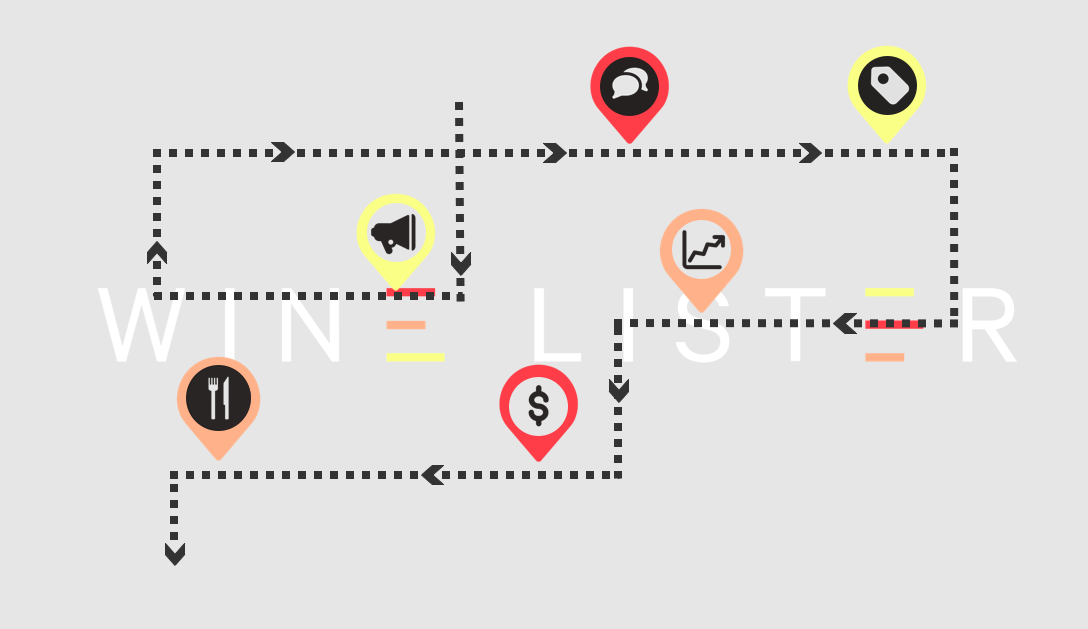
Wine Lister’s benchmarking solution relies on 14 separate data points across three areas in the life of a fine wine – Quality, Brand, and Economics – as well as qualitative trade panel feedback (through an unparalleled network from founder Ella Lister’s years as a fine wine journalist) to assess a wine’s 360° positioning in the global marketplace. Measured annually, Wine Lister’s benchmarking service enables continuous measurement of a wine within its global competitive environment, and results in a reliable, tangible reflection of progress, and ideas for the strategy path forward. Indeed, long-time Wine Lister client Don Weaver of Harlan Estate recently reflected that “It was a natural growth [to work with Wine Lister], another coming of age of our business… As we’ve matured as a business and penetrated further out into the market, we realised that we needed analytics coming back to us, and we needed best practices in our business. We can’t do everything, so we looked at Wine Lister to help us see things through different eyes.”
Such analytical rigour has resulted in numerous actionable insights for our clients, from assisting one client in increasing its journalistic coverage in a foreign market where it was underrepresented compared to peers, to a pricing strategy update for another that balanced the producer’s own interests while maintaining market confidence.
Once findings are identified, clients of Wine Lister can choose to investigate further, by supplying some of their own internal data to our analysts, enabling us to conduct deep-dives on topics as wide-ranging as customer retention, social media and communications effectiveness, or individual release price positioning. The benchmarking analysis is thus a base on which Wine Lister builds long-term relationships with its clients, helping them take their wine to the next level.
For more information, see our producer services page, or contact us for a free 30-minute consultation.
It is the ultimate question for Burgundy fans seeking wines for drinking – with prices of the region’s best having risen so high, where can one find value?
Wine Lister’s second Burgundy study published in collaboration with regional specialist, Jasper Morris, notes the proliferation of good value wines hailing from some of the lesser-known appellations, and even outside of the Côte d’Or (Saint-Aubin, Marsannay, Mercurey, and Pouilly-Fuissé were among those mentioned).
Below Wine Lister explores some of the wines worth snapping up from the 2019 campaign*, based on their relative value when compared with other wines in their sought-after appellations. 37 out of the 58 wines listed in charts below are white.

Chablis – a permanent alternative source for Burgundy drinking white outside of the Côte de Beaune – features heavily. Buzz brands William Fèvre and Billaud-Simon achieve multiple entries, as does the Chablis estate of Maison Albert Bichot – Long-Depaquit, and relative newcomer to the cream of the crop, Jean-Paul et Benoît Droin. This group of top Chablis achieves an average price of £52 in bond per bottle, while their Côte de Beaune counterparts cost more than 30% more for the same quality (since both groups achieve an average WL score of 93).
Among the Côte de Beaune whites, Alain Chavy’s Puligny-Montrachet Folatières, and Fontainte-Gagnard’s Chassagne-Montrachet Caillerets provide the best quality-to-price ratios, both achieving WL scores of 94, for £48 and £53 per bottle in-bond respectively. Domaine Rapet’s Corton-Charlemagne provides excellent value for Grand Cru white (considering that the appellation’s reference – Jean-François Coche-Dury – typically costs over £3,000 per bottle).

Only one Grand Cru red makes the cut in top-scorers under £100 per bottle – Georges Lignier’s Clos Saint-Denis.
In the rest of the Côte de Nuits, strong value propositions hail from Taupenot-Merme throughout, particularly its Morey-Saint-Denis La Riotte. Maison Louis Jadot and Heresztyn-Mazzini achieve multiple entries in Gevrey, and the Nuits-Saint-Georges appellation makes an appearance across three producers – Grivot, Faiveley, and Henri Gouges.
The average price difference between the reds of both Côtes is not so dramatic as for Chablis and its Beaune counterparts. Côte de Beaune reds as shown the image above reach an average price of £72, just 10% lower than the Côte de Nuits group (for the same average WL score of 92). Domaine de Montille takes three of the eight places for its Corton Clos du Roi, Volnay Taillepieds, and Pommard Pézerolles.
*N.B. prices are based on those aggregated through Wine Lister’s pricing partner, Wine Owners. Not all Burgundy 2019s have recorded prices as yet, so the above lists may well evolve over the coming weeks and months.
The end of 2020 is perhaps reason enough to pop open a bottle of champagne. With Christmas and New Year around the corner, Wine Lister has compiled a list of 21 Champagne MUST BUYs to enjoy over the last days of this year, and into 2021. Whether you have a penchant for discovering grower champagnes, or prefer to relish in those the top Grandes Maisons have to offer; whether you enjoy the purity of a Blanc de Blancs, the balance of an assemblage, or the opulence of a Blanc de Noirs, the selection of vintage champagnes below is sure to offer guidance for any preferred style.
Find out more about our 21 Champagne MUST BUYs for 2021 below.
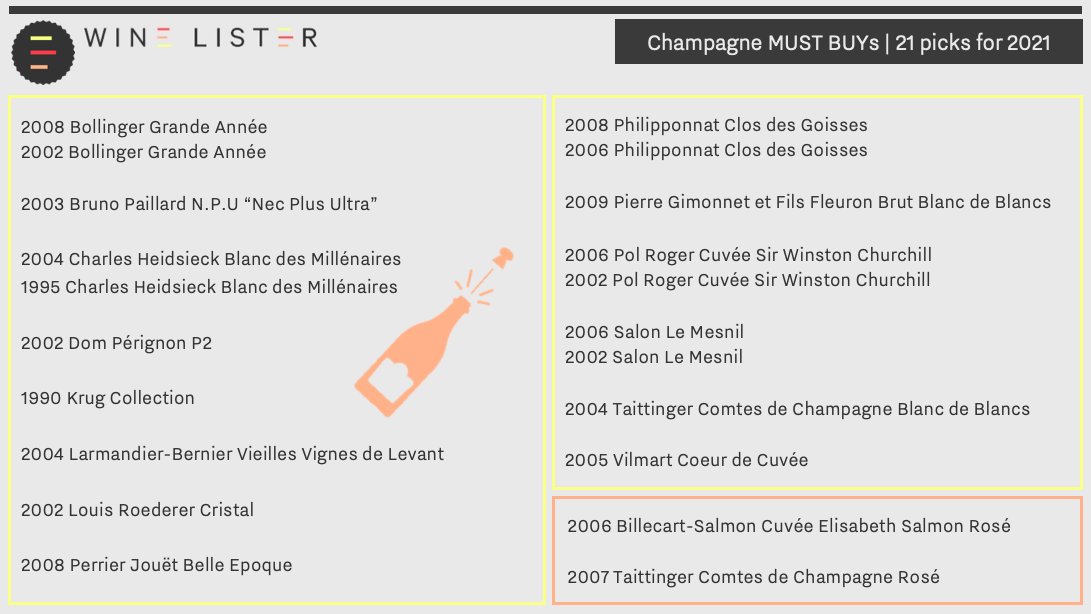
Long-established house, Charles Heidsieck, is represented in our MUST BUY selection with two vintages of its Blanc des Millénaires – 1995 and 2004. The wine is so-named to reflect its high ageing potential, and is only created in vintages worthy of the label (since its inception, just five have been made). The 2004 achieves a WL score of 95, and is praised by Wine Lister partner critic, Jancis Robinson, as having “sheer confidence, appeal and completeness”. Earning one more WL point, the 1995 shows “just how compelling this often-overlooked vintage can be”, according to Wine Lister partner critic, Antonio Galloni (Vinous). Both vintages can be bought by the case of six in-bond from Cru World Wine.
Also the crown jewel of its own house, Perrier-Jouët’s Belle Epoque carries its own portion of history within its name, referencing the Art Nouveau movement of the early 1900s. The prestige bottling can be appreciated on the inside and out, particularly in the spectacular 2008 vintage. Wine Lister tasted it recently, and found it to have a concentrated nose of white peaches, brioche, and a hint of honeysuckle, with brilliant tension on the palate. 2008 Belle Epoque is available to purchase by the bottle from Lay & Wheeler, for £129 (in-bond).
A further two MUST BUYs hail from the boutique house, Philipponnat Clos des Goisses. The 5.5-hectare Clos de Goisses parcel is the oldest and steepest “Clos” in champagne. The 2006 and 2008 vintages of this single-vineyard cuvée both receive a WL score of 96. Jancis Robinson praises both vintages, writing that the 2006 “positively screams for attention”, while the 2008 is “explosive… like a firework on the palate”. They can both be acquired in-bond from Bordeaux Index.
Included in our 21 MUST BUY champagnes are two grower offerings lying outside of champagne’s more widely-declared vintages. Notorious for its killer heatwave, 2003 is not well-appreciated among the champenois. Bruno Paillard’s 2003 N.P.U. challenges this perception, offering a “dancing” palette of “open and floral notes” according to Jancis Robinson. Acknowledging that the vintage was hugely criticised, Paillard says that for him, “it’s a great vintage”. Another elusive grower champagne rounds off our list. Jancis Robinson hailed the 2005 Vilmart Coeur de Cuvée as “a wine to wallow in”, praising its complexity and “refreshing finish”.
Also featured in the list of 21 Champagne MUST BUYs for 2021 are: 2006 Billecart-Salmon Cuvée Elisabeth Salmon Rosé, 2008 Bollinger Grande Année, 2002 Bollinger Grande Année, 2002 Dom Pérignon P2, 1990 Krug Collection, 2004 Larmandier-Bernier Vieilles Vignes de Levant, 2000 Louis Roederer Cristal, 2009 Pierre Gimonnet et Fils Fleuron Brut Blanc de Blancs, 2006 Pol Roger Cuvée Sir Winston Churchill, 2002 Pol Roger Cuvée Sir Winston Churchill, 2006 Salon Le Mesnil, 2002 Salon Le Mesnil, 2004 Taittinger Comtes de Champagne Blanc de Blancs, and 2007 Taittinger Comtes de Champagne Rosé
As 2020 draws to a close, Wine Lister has compiled a report celebrating the top-performing wines and producers within a series of categories over the past year. Using our axes of Quality, Brand, and Economics, and the several factors that constitute these values, we have created seven leagues that paint a panoramic view of some of the world’s best wines, ranked within their areas of excellence.
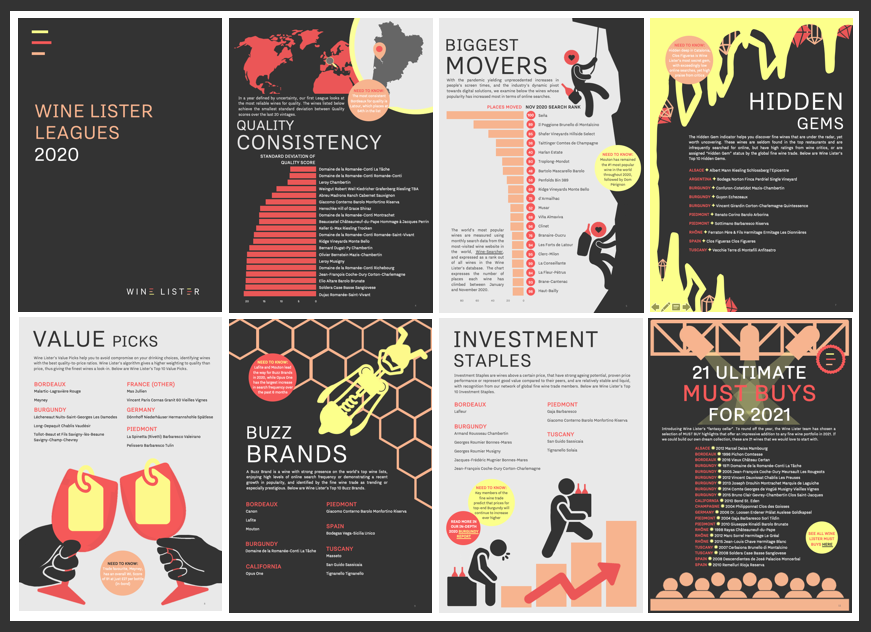
Wine Lister’s 2020 Leagues include rankings of Quality Consistency (wines that show the smallest standard deviation between Quality scores over the last 20 vintages), and Biggest Movers (wines whose popularity has increased most in terms of online searches over the past year). Our team has also put together its top-10 wines per Wine Lister Indicator, revealing our recommendations for Hidden Gems, Value Picks, Buzz Brands, and Investment Staples.
We end the Leagues with a list of 21 Ultimate MUST BUYs for 2021, compiling a selection of MUST BUY highlights hand-picked by our fine wine experts, that offer an impressive addition to any fine wine portfolio in 2021. These are some of the picks that would feature in Wine Lister’s “fantasy cellar”.
Download your free copy of Wine Lister’s 2020 Leagues here.
The first of the Burgundy 2019 en primeur releases began this month, reigniting conversation of last year’s growing season, and its subsequent offerings. Wine Lister has spoken to several key Burgundy producers, and has sampled the 2019s from leading négociant, Louis Jadot, to get a better picture of this promising vintage.
Burgundy’s 2019 growing season was marked by a notably hot and dry summer, resulting in wines of extreme concentration. Due to a combination of spring frost, uneven flowering, and summer drought across many sites, yields in 2019 are significantly lower than average.
 A line-up from Louis Jadot’s 2019 en primeur tasting, organised by Hatch Mansfield at Vagabond, Monument on the 3rd of November 2020
A line-up from Louis Jadot’s 2019 en primeur tasting, organised by Hatch Mansfield at Vagabond, Monument on the 3rd of November 2020
Sourcing grapes from across the region, including its own holdings in some of Burgundy’s most prized plots (e.g. Chapelle Chambertin, Clos Vougeot, and Vosne-Romanée), Louis Jadot’s production in 2019 is down 50% for Chardonnay, and 30% for Pinot Noir. A cool and windy spring caused millerandage across Jadot’s sites, leading to many of the smaller, unripe berries being discarded. Warm temperatures in 2019 meant that grapes had high natural sugar levels, and correspondingly high alcohol across the region. Deputy General Manager, Thibault Gagey, tells us that several Louis Jadot wines are approaching 14 degrees in 2019, however, they nonetheless offer “good acidity, so they are powerful but balanced”, and there “isn’t a feeling of high alcohol”.
Wine Lister agrees whole-heartedly, and was particularly impressed by the quality of the whites. The Chablis Blanchot was “pure and lithe with an already-sumptuous texture”, while the Chassagne Montrachet Morgeot Clos de la Chapelle offered a delightful nose of “honey, truffle, and brioche”, with “rich citrus” on the palate. For reds, Wine Lister enjoyed the “complex and earth-toned” Clos Saint-Denis, and the “powerful but poised” Gevrey-Chambertin Clos Saint-Jacques. Gagey informs us that he is indeed “very proud of the 2019s”, and is “confident that it will be a good vintage”.
Across the Côte de Beaune, harvests were small in 2019. Arnaud Ente tells us that his namesake domaine saw “a spell of spring frost”, which caused significant damage and loss of yield, and “uneven weather patterns during flowering”, caused coulure and millerandage. The summer was mostly hot and dry, causing hydraulic stress to the vines, but “20-30mm of rainfall in late August” helped to unblock phenolic maturation, and allow the grapes to reach “impressive levels of maturity while maintaining good sugar levels, and also a very lovely acidity”. Ente notes that his 2019s have achieved “extraordinary balance, due to the acidity in the grapes developing slowly”. The vintage is of “enormous potential”, if down 20% on an average year in terms of volume.
Domaine Jean-Noël Gagnard similarly experienced significant frost in 2019; the principal cause of its small harvest. Winemaker Caroline Lestimé echoes the experience of “millerandage followed by hydraulic stress on the vines during the summer drought”, resulting in “small, but thankfully exceedingly concentrated berries”. Due to the two extremes of conditions throughout the season, Lestimé analysed the sugar / acid balance frequently near to harvest, so as to pick the optimum window for picking. Once again, quality here is likely a triumph, but Lestimé adds that “Jean-Noël Gagnard has not seen such a small harvest since 1999”.
Guillaume d’Angerville tells us that in Volnay, “frost risk was on everyone’s mind”, however, “dry and windy conditions helped to avoid frost damage” across Marquis d’Angerville’s plots. Water and heat stress in summer was a problem here too, “stopping the plant’s evolution, and veraison was delayed as a result”. He similarly explains that “selecting the correct harvest date proved difficult”, in part due to the “heterogenous grape maturation”, however in the end, “the entire range benefitted from the perfect maturity of the grapes”, despite yields being down 20-30% on the average year. He tells us that his 2019s are “succulent and full of energy”, without being “jammy” from such a hot year, and therefore providing “another successful vintage ending in 9”.
Akin to Louis Jadot, Winemaker Jean-Nicolas Méo tells us that Méo-Camuzet’s 2019s are “well-ripened”, with “fairly high alcohol levels, around 14 degrees”. He states that there is nonetheless “a nice acidity to start”, which provides the wines “a good freshness and a certain structure”, as well as lengthy ageing capacity. Echoing d’Angerville’s sentiment on the success of 9s, Méo foresees “an evolution of this vintage like the 2009: rich and greedy at first, then gradually closing, to emerge in a decade more tense and structured than suggested today”.
Despite the significantly reduced volumes in 2019, the quality of Burgundy’s latest vintage release clearly suggests a long and promising future ahead. The combination of these two factors will surely see demand outweigh supply for en primeur once again. For more guidance on buying Burgundy 2019 en primeur, and essential analysis to inform your wider Burgundy investment decisions, purchase our in-depth Burgundy study here.
Burgundy prices continue to rise, and top wines are becoming ever-harder to access – but must what goes up really come down?
Wine Lister has published its second in-depth Burgundy report, with contribution from partner critic and leading Burgundy expert, Jasper Morris. With insights from key fine wine trade players from across the globe, the report investigates the state of Burgundy compared to other major fine wine regions, and discusses projections for its future performance.
Please see our key findings below:
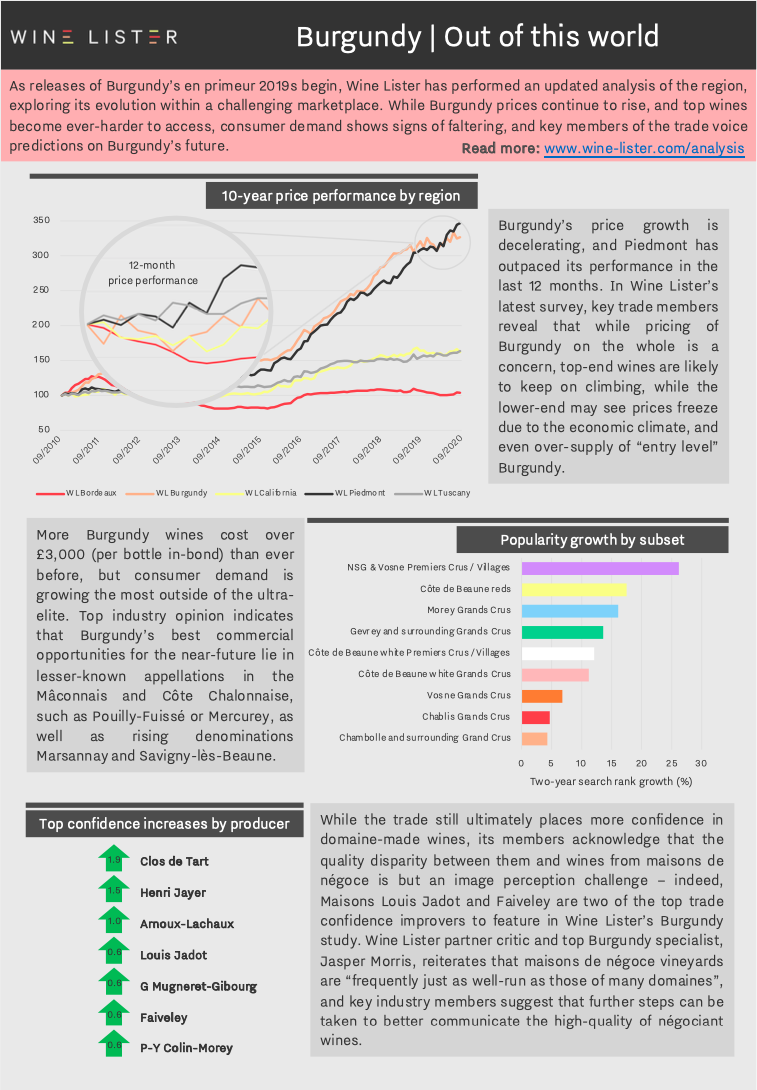
You can download the study digest in English here: Wine Lister Burgundy Study Digest 2020 or French here: Wine Lister Étude Bourgogne 2020 – Résultats Clés. The full report can be purchased on our Analysis page, while Pro subscribers can access their free copy here.
 Lafon-Rochet’s latest release is a “very successful 2020”, according to Wine Lister partner critic, Jancis Robinson
Lafon-Rochet’s latest release is a “very successful 2020”, according to Wine Lister partner critic, Jancis Robinson  Left: Baptise Guinaudeau of Lafleur and Grand Village / Right: Véronique Sanders of Haut-Bailly and Le Pape
Left: Baptise Guinaudeau of Lafleur and Grand Village / Right: Véronique Sanders of Haut-Bailly and Le Pape
 Official photos courtesy of Tenuta San Guido
Official photos courtesy of Tenuta San Guido





